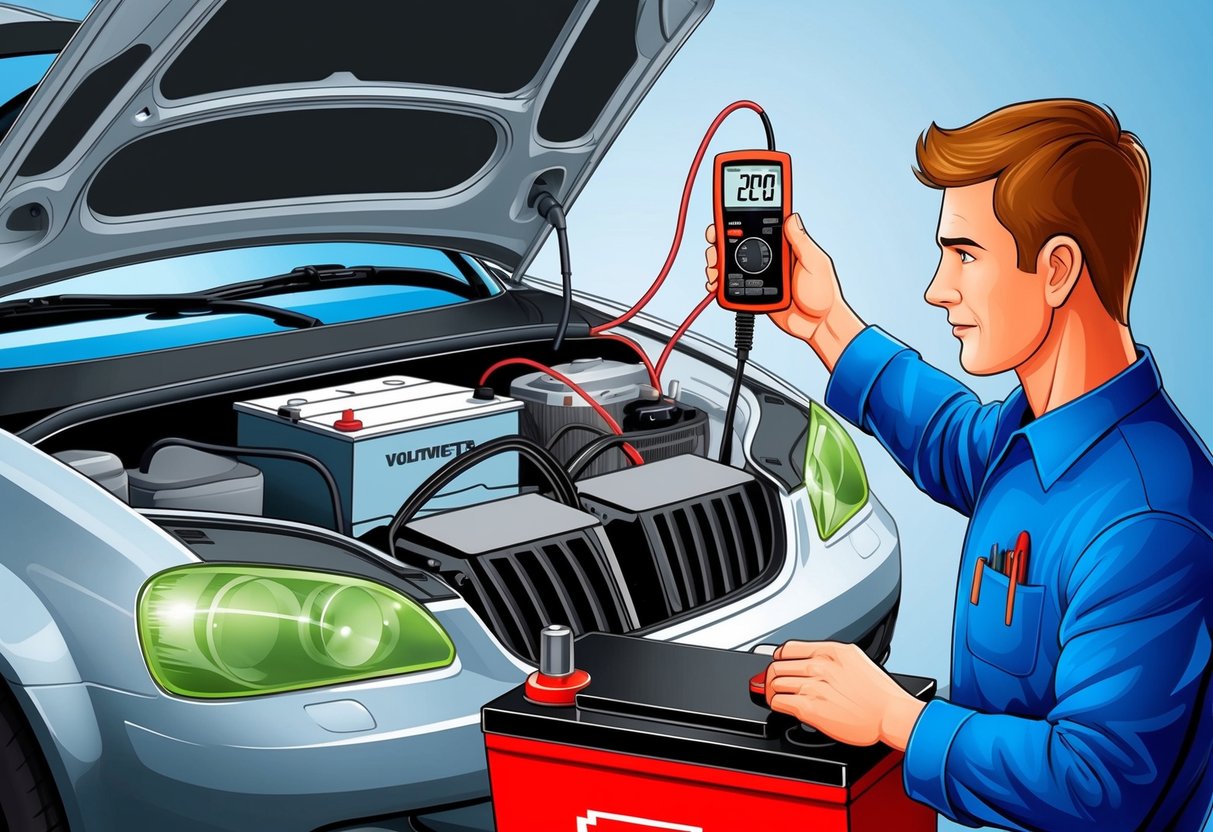
Maintenance to Extend Car Battery Life
Maintaining a car battery can significantly increase its reliability and reduce the chance of breakdowns. Adopting a few key maintenance habits helps to maximize battery life and ensures consistent vehicle performance.
Regular Inspections and Cleaning
Routine checks of the car battery help detect early signs of wear, corrosion, or terminal buildup. It is recommended to inspect the battery at least once a year, especially after the third year of use.
This approach allows potential problems to be fixed before they cause major failures. Clean terminal ends with a mixture of baking soda and water to remove corrosion, which can disrupt the flow of electricity.
Tightening loose cables and making sure the battery is firmly secured protects it against vibration damage. Use a brush specifically designed for battery terminals to ensure thorough cleaning.
In addition to cleaning, check the battery case for any cracks, swelling, or leaks. Replace the car battery immediately if any of these issues are found, as these defects shorten battery life and increase the risk of failure.
Inspect electrolyte levels if the battery has removable caps, and top up with distilled water if necessary.
Avoiding Common Mistakes
Driving habits and environmental factors can greatly reduce battery lifespan if not properly managed. One common issue is leaving headlights, interior lights, or electronics on when the engine is off, which can drain the battery quickly.
Short trips that do not allow the alternator enough time to recharge the battery will eventually lower overall capacity. Combine errands into fewer, longer drives when possible, so the battery receives a thorough charge.
Extreme temperatures—both hot and cold—decrease battery efficiency and lifespan, so parking in a garage or shaded area can be beneficial. Another frequent error is neglecting to turn off electrical accessories or leaving the car unused for extended periods.
Use a trickle charger if the vehicle will not be driven for weeks. For more on maximizing battery life, refer to the guide on how to extend car battery life.
Frequently Asked Questions
Trouble starting the engine, dim headlights, and frequent jump starts are all common problems linked to a bad car battery. Visual signs, driving symptoms, and electrical system clues can help drivers notice car battery failure before it leaves them stranded.
What are the symptoms of a car battery that needs to be replaced?
A car battery that needs replacement often causes slow engine cranking, dashboard lights flickering, or headlights dimming when idling. Electrical components may function irregularly, or devices might lose power quickly.
In some cases, a swelling battery case or leaking acid is visible under the hood.
How can I test for a failing car battery without using a multimeter?
Drivers can observe if the vehicle is slow to start or requires frequent jump starts. Checking if headlights and interior lights dim when turning on the ignition can also help spot problems.
If accessories like the radio or power windows operate sluggishly, the battery may be weak.
What signs distinguish a bad car battery from alternator issues?
If the car starts after a jump but dies soon after, the alternator may not be charging the battery. Dimming headlights or malfunctioning electronics while driving could also point to an alternator problem.
A failing car battery usually causes issues primarily when starting the vehicle, while alternator problems persist during driving.
Is it advisable to replace a car battery before it completely fails?
Yes, replacing a car battery preventatively is recommended to avoid being stranded unexpectedly. Most batteries last three to five years.
If it is near the end of its lifespan and showing symptoms like frequent jump starts, replacement can prevent emergencies. Regular testing during scheduled maintenance also helps determine the right time for replacement.
How can you determine if a car battery needs charging or complete replacement?
Frequent need for jump starts or the inability to hold a charge after full charging usually suggests the battery itself is worn out. However, if lights or electronics work fine after charging, the battery may still be useful.
Professional testing can measure battery health and determine if a replacement is necessary.
What indicators can warn you of an impending car battery failure?
Warning signs include slow engine starts, repeated jump starts, swelling battery cases, leaking fluid, and the battery warning light appearing on the dashboard.
Dim or flickering headlights and interior lights are also common indicators.